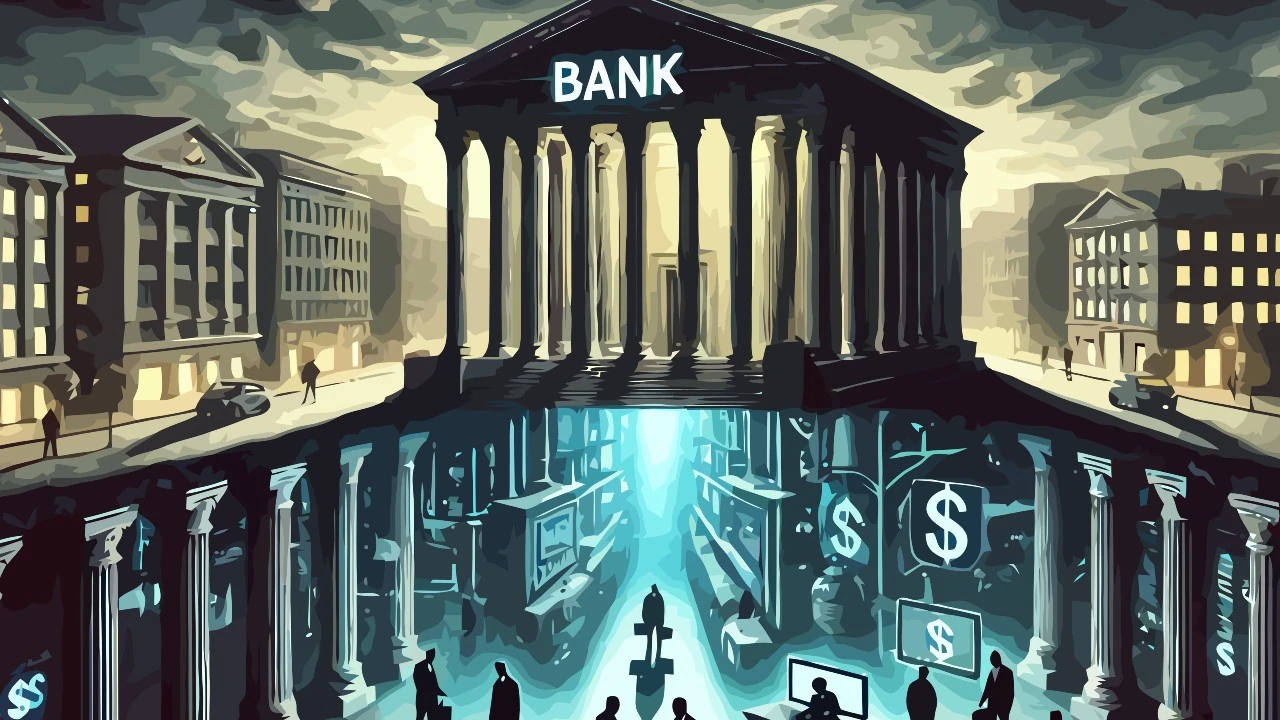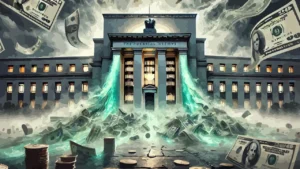There is a financial system that works parallel to the traditional, regulated and more commonly defined as banking system. It is called shadow banking and it has been responsible, together with the euphoria of profit of the common people, for the biggest financial collapses of the last decades. The good news is that some patches have been sewn, the bad news is that in the meantime new holes have appeared.
Contents
#1. Introduction
Shadow banking refers to a set of financial intermediaries and activities that operate outside the traditional banking system and its regulation. This system includes entities such as hedge funds, structured investment vehicles, money market funds and other financing vehicles, which provide similar services to banks, such as lending and liquidity creation. However, unlike traditional banks, these entities are not subject to the same regulatory oversight and capital reserve requirements.
Shadow banking has grown rapidly, especially following the 2008 financial crisis, as many investors and companies have sought alternatives to conventional banking channels. However, this expansion has raised concerns about systemic risks, as shadow banking activities can contribute to financial instability due to their lack of transparency and regulation.
In times of crisis, these entities can be subject to bank runs or rapid withdrawals of funds, amplifying tensions in the global financial system. Despite the risks, shadow banking remains a significant and growing component of the global economy.
#2. Role in the 2007-2008 crisis
Shadow banking played a crucial role in the global financial crisis of 2007-2008. Before the crisis, many banks moved their loans, including subprime mortgages, into off-balance sheet vehicles, which packaged them into securities sold to investors. These securities, such as mortgage-backed securities (MBS), spread credit risk throughout the global financial system.
As the housing market began to collapse and subprime mortgages defaulted, the shadow banking entities that had purchased and distributed these securities found themselves exposed to significant losses. The lack of transparency and regulation meant that many investors and regulators were unaware of the extent of the risk they were taking, contributing to the collapse of the financial system.
#3. Response and changing threat
In response to the crisis, regulators have implemented a series of reforms to limit the risks associated with shadow banking. In the United States, for example, the Dodd-Frank Act introduced stricter transparency rules and imposed more stringent capital requirements for banks and other financial institutions. In Europe, too, steps have been taken to more closely monitor the activities of non-banks.
However, despite these reforms, shadow banking continues to grow, fueled by financial innovation and the search for yield in a low-interest environment. New financial technologies (fintech), such as peer-to-peer lending platforms and cryptocurrencies, represent new forms of shadow banking that pose new challenges for regulation.
#4. How to protect your money
To protect your money from the shadow banking system, it is essential to adopt a prudent and informed strategy. First, avoid investments in complex and opaque financial products, such as high-risk funds and structured bonds, which are often associated with the shadow banking system.
Also, diversify and decorrelate your portfolio to reduce your risk exposure. Carefully research the entities you invest with and make sure they are subject to strict regulations. Consult an independent financial advisor who can help you make informed decisions, avoiding hidden risks. Finally, keep a significant portion of your savings in liquid and relatively safe instruments, which can offer you protection in the event of financial turbulence.
Prefer simple, well-regulated financial instruments such as traditional savings accounts, government bonds, mutual funds managed by reputable institutions, and of course gold ( last but not least).
#5. Review of the situation
The volume of collateral banking transactions has grown in the new millennium. In 2007, the Financial Stability Board estimated the economic size of the collateral system in the United States at $25 trillion, but since 2011 it has been estimated to have decreased to $24 trillion.
Globally, a study of the eleven largest collateral systems claims that in 2007, collateral totaled $50 trillion, a volume that dropped to $47 trillion in 2008, followed by growth to $51 trillion at the end of 2011, with a subsequent increase to $75 trillion in 2013.
Turning to the current situation, according to an article in today’s Il Sole 24 Ore, the estimates are even worse. At least 47% of the markets would be in the shadows with a level of “submerged that reaches 220,000 billion dollars. An enormous figure that should make us reflect, especially if compared with the world public debt that amounts to just over 310,000 billion dollars.
Although there is no explicit and direct correlation between the “capitalization” of the shadow banking system and the public debt of the entire world, knowing that the former is worth more than 2/3 of the latter simply makes my skin crawl.











Leave a Reply